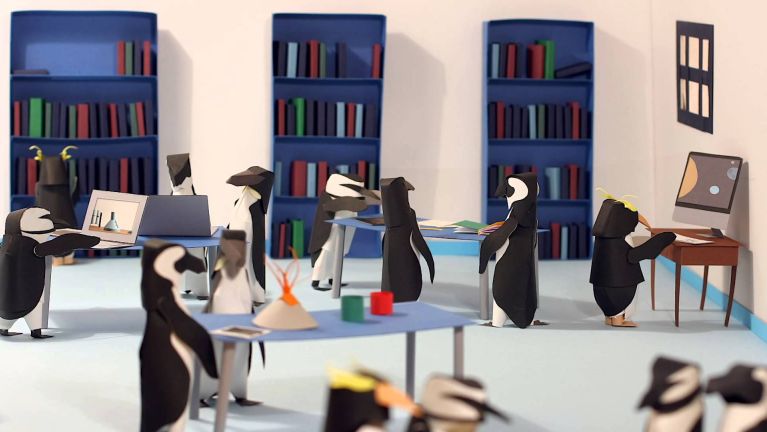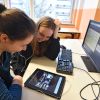“Flipped classroom”: laptop-learning
Professor Martin Bonnet teaches on YouTube– with amazing success. We explain how this works.

Germany. A professor of materials engineering, Martin Bonnet is still happy enough to see his students, but found it strange nonetheless that hundreds of them would catch the tram to TH Köln University of Applied Sciences each morning “just to listen to me”. As he puts it: “One can spend one’s time at university in a more meaningful way – in interaction, and in applying that which one has learnt.”
How the “flipped classroom” approach works
Bonnet employs the “flipped classroom” approach: students use a video to learn at their own pace and in their own rhythm – at home on their laptops, for instance. They can pause, forward or rewind the video until they feel that they have fully understood the content.
Dieses YouTube-Video kann in einem neuen Tab abgespielt werden
YouTube öffnenThird party content
We use YouTube to embed content that may collect data about your activity. Please review the details and accept the service to see this content.
Open consent formBonnet runs the “Welt der Werkstoffe” (i.e. World of Materials) YouTube channel – and has increased the success of his students. In an interview for “Bild”, Germany’s largest tabloid newspaper, he explained: “Before I started using the videos, roughly half of the students would fail the exams. Now only ten percent do.”
Digitising university teaching
The new teaching approach entails new challenges – for students and their professors alike. Hochschulforum Digitalisierung sees the latter as having more of an “accompanying and enabling role”. Many different people are involved in the knowledge transfer process: “Media education experts help design the lessons, programmers provide the technical infrastructure, teaching assistants can support groups of students and supervised peer reviews allow students themselves to review the performance of their fellow students to some extent.”
Bonnet has learnt a lot: the Centre for Teaching Development at TH Köln University of Applied Sciences gave him the idea of using videos to impart knowledge. However, as the professor points out: “The medium of video must also be suitable for the subject and teacher in question.” What he means by this is illustrated by his tongue-in-cheek characterisation of different professor types: from energy-drink-guzzling profs making a desperate bid to appear young and cool, to “softies” who get together with their students over a nice cup of tea to find out where they lost marks in their latest class exam.
Dieses YouTube-Video kann in einem neuen Tab abgespielt werden
YouTube öffnenThird party content
We use YouTube to embed content that may collect data about your activity. Please review the details and accept the service to see this content.
Open consent form

